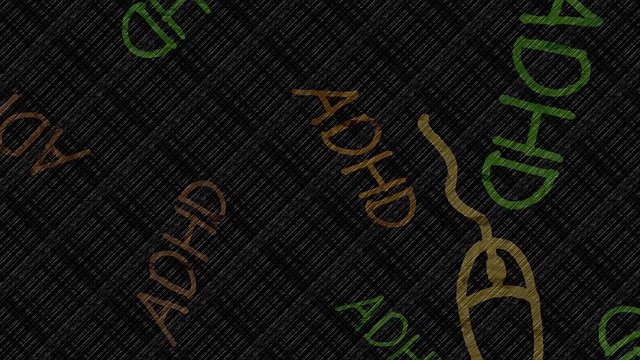
Attention deficit hyperactivity disorder, ADHD, can affect learning, impulse control, and attention levels. This can be a great challenge to those who suffer from ADHD which is commonly treated with medication, lifestyle changes, and psychotherapy. However, these things are not always effective, and medication can have some concerning side effects.
Neurofeedback therapy is a non-invasive treatment that does not involve the use of medication. This type of treatment is also called biofeedback and Neurotherapy. Here is a great article about the ways that biofeedback can change different types of brainwaves.
ADHD Symptoms
Attention deficit hyperactivity disorder is categorized into inattentiveness, hyperactivity, and impulsiveness. A lot of people with ADHD will have symptoms relating to all of these things, but some people may only have problems with one of them.
Inattentiveness may be seen as a short attention span or the ability to be easily distracted. A person with ADHD may also be forgetful or unable to stick with tedious tasks. Hyperactivity and impulsiveness are related to the inability to sit still. People with ADHD may fidget or talk excessively. They may also have a hard time waiting their turn.
How Does Neurofeedback Therapy work for ADHD?
When a person has ADHD, the characteristics of the brain, primarily the frontal lobe that influences personality and learning, affect their behavior. Changes in behavior can alter the brain and vice versa. Neurofeedback aims to change the brain in order to change the person’s behavior.
The human brain produces electrical signals called waves. A neurofeedback practitioner will measure the waves. This is typically done using an electroencephalograph, or EEG. There are five types of brain waves that have different measurable frequencies. The waves are alpha, beta, gamma, delta, and theta.
People who have ADHD may have more delta and theta waves and fewer beta waves than people who do not have ADHD. The idea is that neurofeedback can assist in correcting the difference. This may contribute to an improvement in focus, impulse control, and executive function. The changes in brainwaves are measurable and it seems that the changes may last well beyond the end of therapy.
Neurofeedback requires a lot of time to be successful. It can take 20 to 40 sessions for neurofeedback to increase beta waves and reduce delta and theta waves. Beta waves are associated with the processing of information and problem-solving skills. Theta waves may be associated with disorganization and the ability to be easily distracted.
During neurofeedback sessions, the practitioner will monitor the brain waves using scalp sensors. These sensors will measure the brainwaves so that the therapist can see where they are. Then, when they reach good levels, the participant will work with the therapist to recognize when that occurs so that this optimal state becomes almost second nature. Each neurofeedback session will last 30 minutes at the most.
What to Expect?
A lot of people are concerned before they begin neurofeedback therapy so it can be beneficial to know what the process will look like. Before the first session, the therapist will ask you questions to determine the best possible course of action.
They will likely ask about your specific symptoms. They may want to know the severity and frequency of the symptoms. They may also want to know about your general lifestyle because that could affect the symptoms as well. They will also want to know about your treatment history and any other issues that may affect the ADHD symptoms. These things will be discussed before each treatment session as well so that the therapist can track and record your improvements or lack thereof.
Before the session begins, the therapist will attach electrodes to your head. These will be connected to an EEG and are used to measure the brain’s activity. The number of electrodes will depend on the session and the therapist. They do not hurt or deliver any electric current so there is nothing to be afraid of.
A scan of your brain waves will show up on a screen in real-time. The therapist will tell you to perform a task or think of a situation in order to alter the brain waves. The activities vary depending on the practitioner, but it could involve music, video games, sounds, or other stimuli that encourage the brain to process information in a certain way. As the brain responds to the stimuli, the EEG will show the therapist how the stimuli change the brain waves.
The process is designed to teach your brain waves what they should be doing instead of what they have been doing. If you practice and train your brain to act in a certain way, it will be easier for it to do so over time.
During sessions, you may be hooked up so that a movie, game, or other positive stimuli begins when your brain begins to move the brain waves in the correct way. Then, it will shut off when the brain does the opposite. This can help to train the brain to associate the correct brain waves with positive experiences.
Is it Safe for Children?
Children often have issues with ADHD which can interfere with their education and other aspects of their lives. Neurofeedback therapy is safe for children and may assist with the treatment of ADHD and other disorders including autism, learning disabilities, and OCD.
Possible Side Effects
There are side effects associated with neurofeedback therapy. It is important to talk to your therapist about any possible side effects such as fatigue, nausea, mood swings, or anxiety. These types of side effects need to be addressed so that neurofeedback therapy can be adjusted, reduced, or stopped altogether.
It is also important to note that you or your child will not have to stop taking medication for ADHD if you already do so. Also, neurofeedback therapy takes a lot of time to be effective. It may take weeks or even months to see an improvement in the symptoms associated with ADHD or other disorders.
Final Thoughts on Neurofeedback Therapy for ADHD
ADHD can cause symptoms that can reduce your overall well-being. It can harm your productivity and behavior. However, there are several options as far as effective treatment is concerned. If psychotherapy and medication have not been helping enough, you may want to consider neurofeedback therapy.
ADHD may alter your brain waves. In particular, people with ADHD may have more delta and theta waves and fewer beta waves. Neurofeedback therapy may help to alter these patterns which can improve symptoms associated with ADHD.

Marie Miguel has been a writing and research expert for nearly a decade, covering a variety of health-related topics. Currently, she is contributing to the expansion and growth of a free online mental health resource with BetterHelp.com. With an interest and dedication to addressing stigmas associated with mental health, she continues to specifically target subjects related to anxiety and depression.










